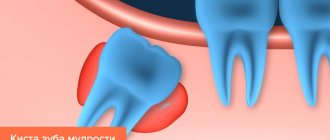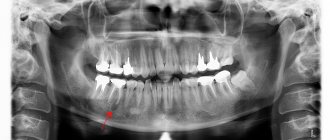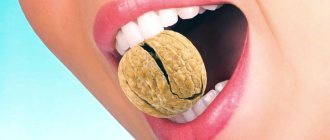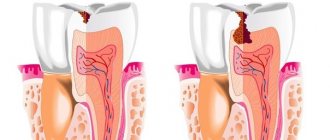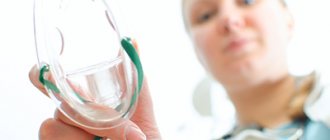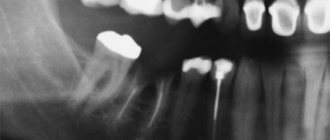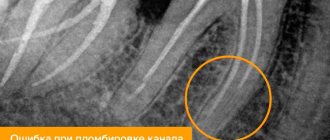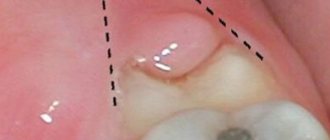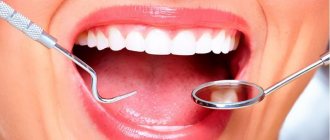Sedation or drug-induced sleep in dentistry is a special method of anesthesia that involves immersing the patient in a state of superficial sleep. The person does not switch off completely, but only relaxes, calms down and stops panicking.
A patient in a state of medicinal sleep does not hear frightening medical smells, does not feel manipulations performed in the mouth, does not feel pain or fear, and wakes up without memories of dental treatment.
This is not anesthesia with narcotic drugs ; these sleeping pills after surgery are instantly eliminated from the body after the first visit to the toilet, since we work only with ultra-short-acting drugs that are excreted in the urine within an hour. The dosage of the drug is determined depending on the characteristics of a particular organism and mental state.
Benefits of treatment under sedation
- Sedation is not anesthesia . Narcotic substances are not used for sedation, only ultra-short-acting sleeping pills. “Exit” from sedation is 30-40 minutes and you can go home, no hospital is needed.
- All teeth at once . Doctors work with 4 hands: in one visit it is possible to carry out a total sanitation of the oral cavity - treat living teeth, remove hopeless ones, install implants and crowns, adjust soft tissues.
- No bad memories . This feature of sleep treatment is a miracle for patients with dental phobia. It is known that sedation is a way to cure dental phobia in just a few visits.
- Salvation for heart patients . In sedation, the patient's condition is corrected by the anesthesiologist, in contrast to waking treatment, so a hypertensive crisis during and after the visit is excluded.
- Up to 14 hours straight in a chair . All dental problems can be solved in one visit without a dental series with weekly trips to the dentist for six months.
- No gag reflex . With increased sensitivity to dental intervention, expressed in pharyngeal spasms, sedation is the only way to cure teeth.
Cured all my neglected teeth in one day in my sleep
. I came out of sedation quickly, as if I was just sleeping.
Thanks to Maria Nikolaevna and Dr. Karpov! I'm afraid of dentists, every visit is stressful. I missed my teeth. I chose the Levin clinic, where they provide sedation instead of anesthesia. Everything was fixed in one day. They woke me up and said they had already done everything. I slept for 5 hours, but it felt like an instant.
Maria, 32 years old
If only I knew that sedation is cool and not scary
, I would have long ago cured all my suffering and fearful teeth!
Special thanks to the wonderful doctor Maria Nikolaevna Klimova for her qualified assistance, kind attitude and care. All problem teeth were cured in one visit.
Elena, 27 years old
Under sedation, it’s like being in a dream - absolute comfort, I don’t remember any unpleasant sensations
.
Low bow to Konstantin Mikhailovich Karpov. He saved a tooth with a cyst that no one wanted to treat, but he took it on. All other problem teeth were treated in one appointment. And all this is in a dream.
Arkady, 65 years old
Delight! Now if you treat your teeth, it’s only in your dreams.
!
I’m terribly afraid of dentists, I tried treatment under sedation for the first time - it’s fantastic! You fall asleep, wake up - all your dental problems are solved! Thanks to Maria Nikolaevna for her golden hands and to the entire team of the Center!
Anastasia, 23 years old
Standards of sleep treatment in our Center
Dental treatment under sedation
Dream dentistry is the gold standard around the world. The dentist is working, the patient is resting
- Absolute comfort before and after treatment
- The doctor is focused only on treatment
- Large amount of work in 1 visit
The therapeutic department provides assistance in the LifeTime Warranty format, in strict accordance with the Center’s Unified Quality Standards. The obligation of every doctor is to carry out treatment in such a way that the patient forever forgets about the dental problems with which he came in. We reduce to zero the likelihood of medical errors, inaccuracy in diagnosis and the possibility of complications and relapses.
Dental treatment is carried out only using high-precision diagnostic methods, ranging from computed tomography to an operating microscope.
Materials only from the line of the world “gold standard”, for example Harmonyze from Kerr and Ah Plus from Dentsply, are purchased only from official representatives in Russia and are 100% original. The use of rubber dam and optragate is mandatory.
In our Center, therapists do not work “on the fly”; they provide personalized medical care without any restrictions on the time they can see one patient.
Operation stages
1. Consultation
The doctor listens to the patient, determines the condition of the teeth, gums and the advisability of implantation, and answers the patient’s questions.
2. Diagnostics
The patient is sent for an x-ray. A 3D computed tomography (CT) scan is performed. Helps to exclude contraindications and assess the volume and condition of bone tissue.
3. Preparation
They organize treatment of dental pathologies (if they are diagnosed), and carry out professional cleaning of the oral cavity.
4. Installation of implants
After anesthesia, the implants are implanted using the method of detaching the gum flap, followed by suturing the gums (with a two-stage protocol) or fixed through a puncture (with a one-stage implantation).
5. Prosthetics
If the operation is organized in 2 stages, 2-6 months after the implantation of titanium roots, the patient is fitted with permanent dentures with crowns made of zirconium dioxide or metal ceramics. While the bone is fused with the implants, the patient wears a temporary removable denture. In a one-stage protocol, the installed artificial roots are loaded with an adaptive prosthesis 2-3 days after surgery. Re-prosthetics with permanent structures are organized after a year.
How is sedation performed?
- A butterfly catheter is fixed on the patient’s wrist (we use the most delicate ones from a children’s set) and an infusion pump is connected for controlled administration of drugs.
- If indicated, the assistant performs local anesthesia to be 100% sure that the treatment is painless; by this time the patient no longer feels the injection.
- The doctor checks sensitivity to pain and begins treatment. While the dentist is treating, the anesthesiologist monitors the patient’s condition, checks breathing, pulse and measures blood pressure on cardiac monitors.
- An ECG is performed directly during the treatment process; control of the balance of oxygen and carbon dioxide is automated by our own oxygen generation station.
- The work ends, the anesthesiologist awakens the patient, the assistant takes him to a control x-ray, and then, if necessary, to the recovery room for more comfortable rehabilitation.
- 30-40 minutes after treatment and the anesthesiologist checking the patient’s condition, you can go home.
Sedation is absolutely safe and has a minimum of contraindications
There is no need to be afraid of the negative effects of medications on the body, because they do not provoke addiction, but only put you into a state of sleep for a very short time determined by doctors.
Levin Dmitry Valerievich Chief physician and founder of the Doctor Levin center
The doctor always has the opportunity to quickly wake up the patient, for example, take a control x-ray or let the patient go to the toilet. The anesthesiologist carefully monitors the condition of the human body during treatment using modern equipment. There is no risk.
Sedation and its duration are controlled not only by the anesthesiologist-resuscitator, but also by the infusion pump, which guarantees the exclusion of the human factor in high-precision drug administration procedures, so any misunderstandings are excluded.
Contraindications to removing multiple teeth
There may be several contraindications for tooth extraction surgery, all of them are divided into relative and absolute. The former can be dealt with as quickly as possible by carrying out the necessary treatment, while the latter are a reason to refuse surgery. Contraindications can also be classified into local and systemic.
Local factors are usually called the presence of a strong inflammatory process at the site of the operation, the presence of a malignant tumor at the site of the operation, as well as strong exposure to radiation in the exact place where surgery is planned.
General medical contraindications include the following: serious injuries to the cranial system, damage to the kidneys and liver, for example, cirrhosis, pregnancy in the first and last trimester, as well as breastfeeding. Also, the operation may be in jeopardy if the patient has a serious drug or alcohol addiction, various lesions of the nervous system, etc.
After sedation
Patients return home immediately after treatment; there is no need to stay in the clinic. It is only temporarily prohibited to drive vehicles or any dangerous devices, since at first the reaction speed will be slightly reduced. Usually, we ask you to stay at the clinic for 20-30 minutes for tea, then you can go home.
If you feel that it is better to go home by taxi, we will call you a car, and your car can remain until the morning in our guarded parking lot in the courtyard of the clinic. Also, after treatment under sedation, there is no need to engage in work that requires precision and care.
You will find a certificate of recommended bed rest in a black bag with medications and postoperative recommendations.
Are there any requirements for daily routine, physical activity, diet?
The dentist at the AcademStom clinic will recommend a gentle regimen in the first days, especially if bone grafting was performed. You cannot visit the bathhouse or sauna.
There is no need to put too much strain on the body. In nutrition, you should adhere to a complete diet in order to provide growing bone tissue with all the necessary building materials.
- It is necessary to avoid chewing on the part of the jaw where the implantation was performed until the soft tissues have healed.
- Do not immediately eat hard fruits, sticky toffees, crackers and other foods that can damage the primary stabilization.
Sedation and general anesthesia: what is the difference?
| Disadvantages of anesthesia | Benefits of Sedation |
| Composition Narcotic drug, toxic | Composition Sedative (hypnotic) drug |
| Action: Deep fall into unconsciousness. Indicated only for major operations (not dental). | Action: Falling asleep. The degree of immersion depends on the volume of the operation. Can be monitored during the procedure |
| Introduction Intravenous | Administration Simultaneously with anesthetic drugs |
| Effect on the body during surgery Requires connection to a ventilator through a tube (intubation) | Effect on the body during surgery Mild effect, all reflexes are preserved Possible damage to the throat and trachea. The tube interferes with the doctor during surgery |
There are two types of extraction
Planned removal is prescribed if:
- A diseased tooth cannot be cured;
- The patient has a growth pathology - the tooth is positioned incorrectly, injures the tissues in the oral cavity or interferes with nearby teeth;
- The crown of the tooth is completely destroyed.
Emergency extraction is performed if the patient:
- Purulent periodontitis – acute inflammation develops in the periosteum;
- There is a process of bone destruction due to jaw osteomyelitis.
Signs of periostitis are:
- Throbbing sharp pain;
- Temperature increase;
- Edema.
In such cases, you cannot take measures on your own. Rinsing and warming up will not only not help, but will also worsen the situation.
Modern anesthetic drugs allow tooth extraction to be performed without pain. Anesthesia can be carried out in stages: first, the surface of the gums is covered with gel, and only after that the main anesthetic is administered.
Removal varies in difficulty. In any case, the tissues of the oral cavity are injured and complications are possible. Manipulation requires the professionalism of a dentist.
Choosing the right clinic for sleep treatment
To carry out dental treatment under sedation or anesthesia, preference should be given to a clinic with a licensed anesthesiology department and full-time specialized specialists, an anesthesiologist-resuscitator and an anesthesiological nurse.
License
Licensing the work of the Anesthesiology Department is a difficult and financially expensive task. The requirements of Rospotrebnadzor for the size, layout and organization of engineering communications of the operating units of the department are so serious that many just opening clinics refuse to provide the service even at the project stage. Rebuilding a functioning ordinary clinic is simply impossible.
The equipment of the doctor's workplace must comply with modern conditions for equipping the anesthesiology department: ventilators, defibrillators, laryngoscopes of various sizes and endotracheal tubes of all sizes, subclavian catheters, monitors for constantly monitoring changes in basic vital signs, infusion pumps, original certified medicines and emergency medicines, a wide range of list of special disposable instruments and accessories.
Licensing complications prompt many unscrupulous businessmen to offer treatment under anesthesia, which is simply illegal. Needless to say, there is a risk of getting into trouble as a result of such treatment.
Our Center is annually voluntarily inspected by Rospotrebnadzor and the Ministry of Health for compliance with all rules, regulations and orders for providing care to patients in the field of anesthesiology and resuscitation.
Specialists
The staff of the Department should consist of experienced adult anesthesiologists and highly specialized nurses who are directly involved in ensuring high-quality and safe anesthesia.
The “best anesthesiologist in Moscow” who comes to the clinic “just for you” for a few hours will never be in control of the situation and will forget about you in an hour, will never come to the rescue and will disappear at the first problem. This “touring” approach is used not only in non-accredited clinics. Such an attitude can spoil the impression of a very reliable and progressive type of treatment and undermine the last trust in doctors.
Our staff anesthesiologist-resuscitator, Sergey Alekseevich Zinoviev, has more than 25 years of experience and has been working at the Center since 2003 without a single complication in 17 years .
The lack of specialists in anesthesiology is the main obstacle to the widespread use of sedation, the “gold standard” technology, in Russia.
Reviews
After reading reviews about the treatment of pulpitis at the Natadent clinic, you can be sure that our little patients and their parents are always satisfied with both the treatment process and the quality of the result.
Don't forget to leave your review, we will be very grateful!
LEAVE FEEDBACK

